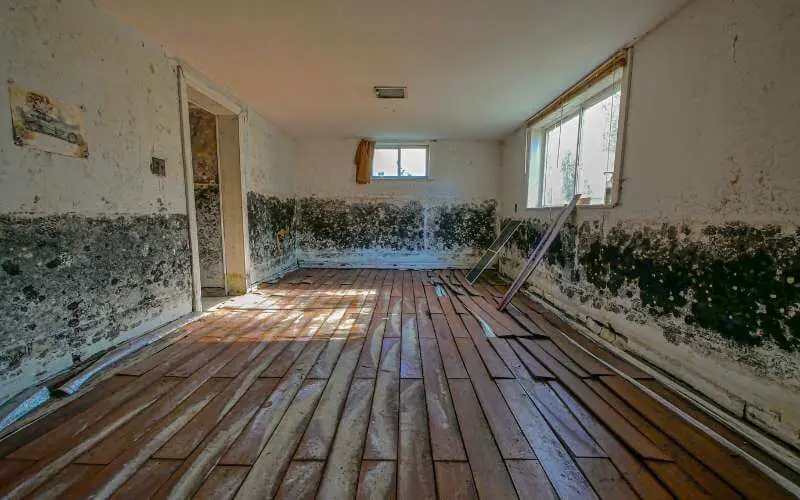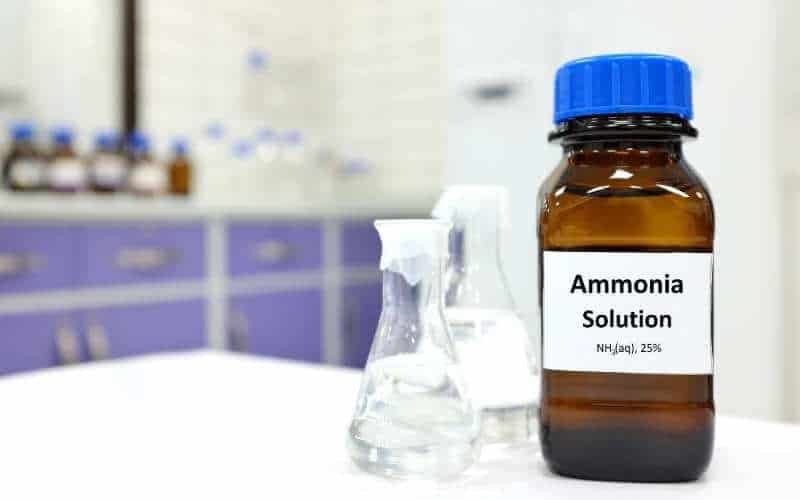Mold quickly grows on surfaces that stay damp for a long time. It leaves an unpleasant stain on areas like windows, pipes, roofs, wood products, and flooded areas. It is important to state that most household chemicals kill mold.
But, does Ammonia Kill Mold? The answer is YES. To do so effectively, firstly make the ammonia solution, then spray it on the mold, and lastly wipe or rinse the area.
Read on as we throw more light on this.
Related: 7 Best Mold Foggers
Does Ammonia Kill Mold?
Table of Contents
Yes, ammonia kills mold. Ammonia doesn’t only kill Mold; it remains one of the most effective ways of killing it. However, it would be best to take certain precautions before using Ammonia because it can be dangerous.
How to Kill Mold with Ammonia
First, you will need the following materials:
- A spray bottle
- Ammonia
- Gloves
- Dry rag
- Scrub brush
- Ventilator
- Goggles
To kill Mold using Ammonia, follow these easy steps:
Step 1: Make an Ammonia Solution
Wearing your goggles, gloves, and ventilator, carefully make an Ammonia solution by mixing a tablespoon of Ammonia with 2 cups of water. Do this in a clean spray bottle.
Step 2: Spray the Ammonia Solution on the Mold
Gently spray the ammonia solution directly on the Mold and allow it to settle for 20 minutes. You can leave it for more than 20 minutes, depending on how long the Mold has stayed on the surface.
Step 3: Wipe or Rinse the Area
Rinse the surface with clean water. Wipe the Mold away from the surface using a dry rag or a brush.
This simple method works perfectly in killing molds. However, you should note that while Ammonia does kill Mold, it can return if the affected area remains moist. Therefore you should ensure that your surfaces remain dry.
Since humidity and condensation are mostly the cause of Mold in places like bathrooms and kitchens, it is almost impossible to avoid molds from appearing.
This is because the steam from cooking or warm showers condenses on walls and ceilings, leaving them wet.
The best way to avoid molds from appearing is by addressing the cause. For instance, Plumbing leaks may cause Mold but fixing it will stop reappearing.
It is advisable to fix the cause immediately you discover it because it can grow deep inside areas, especially in materials made of wood.
Here’s how to go about this:
- Locate the cause of the moisture and fix it.
- Dispose of contaminated items
- Disinfect and get rid of any unpleasant smell.
- Restore the affected area to its original state.
While Ammonia does kill Mold, it cannot quickly get into porous materials. This implies that Ammonia can only kill Mold on the surface. Meanwhile, Mold growing inside the material may remain.
Read: Best Mold and Mildew Resistant Exterior Paint
How to Safely use Ammonia
Ammonia can be very poisonous if it enters the human body by inhaling, swallowing, or even skin contact. If you have used Ammonia before, you will know that it has a powerful smell.
Therefore, it is essential to take the following precautions while using Ammonia to Kill Mold.
1. Ensure the area you are cleaning is adequately ventilated. It would be best if you kept doors and windows open to circulate enough air.
2. Protect your skin by wearing long sleeves, pants, and gloves.
3. Put on a ventilator so you won’t breathe in ammonia fumes. A ventilator is the most effective because cloth and paper masks may not provide as much protection.
4. Wear goggles that will cover your eyes adequately.
5. Ensure pets and children stay away from the affected area immediately after applying the Ammonia. Keep them away for about 4 hours after using it.
No doubt, Ammonia kills Mold. However, If you have killed Mold with Ammonia many times or if the affected area is more than 10 square feet, it is best to consider an alternative.
Other Ways of Killing Molds
Aside from Ammonia, the following household chemical can be used to kill molds:
Hydrogen Peroxide
Pour a 3% solution of hydrogen peroxide into a clean spray and gently spray on the Mold. Leave it for 15 minutes and gently scrub the Mold away.
Vinegar
You can also kill molds using vinegar. Pour unadulterated vinegar into a spray bottle and spray on the affected area. Leave it for an hour and then wash it off using clean water.
When the Mold appears on your plastic curtain or liner, the best way to get rid of it is by using a mold and mildew spray.
An alternative is washing your plastic liner in the washing machine. However, it would be best to do this on the delicate cycle with warm water, detergent, and bleach.
If it is a fabric shower curtain, it is advisable to wash it in the warmest setting possible.
Read: Best Mold and Mildew Resistant Exterior Paint
Conclusion
Instead of asking, Does Ammonia kill Mold, follow the steps outlined in this article to get rid of molds in your home. Don’t forget to take precautions while using Ammonia because it is poisonous.
Ammonia can cause respiratory problems, or in extreme cases, it can burn your nose, throat, or even lungs.
Lastly, do not mix Ammonia with other chemicals, especially bleach. This mixture can be very toxic as it can lead to suffocation.
This article was written to deal with if ammonia kills molds to help give you guidance when faced with a mold infestation.
We hope you found it helpful and informative. If you did, please share it across your entire social media pages.


